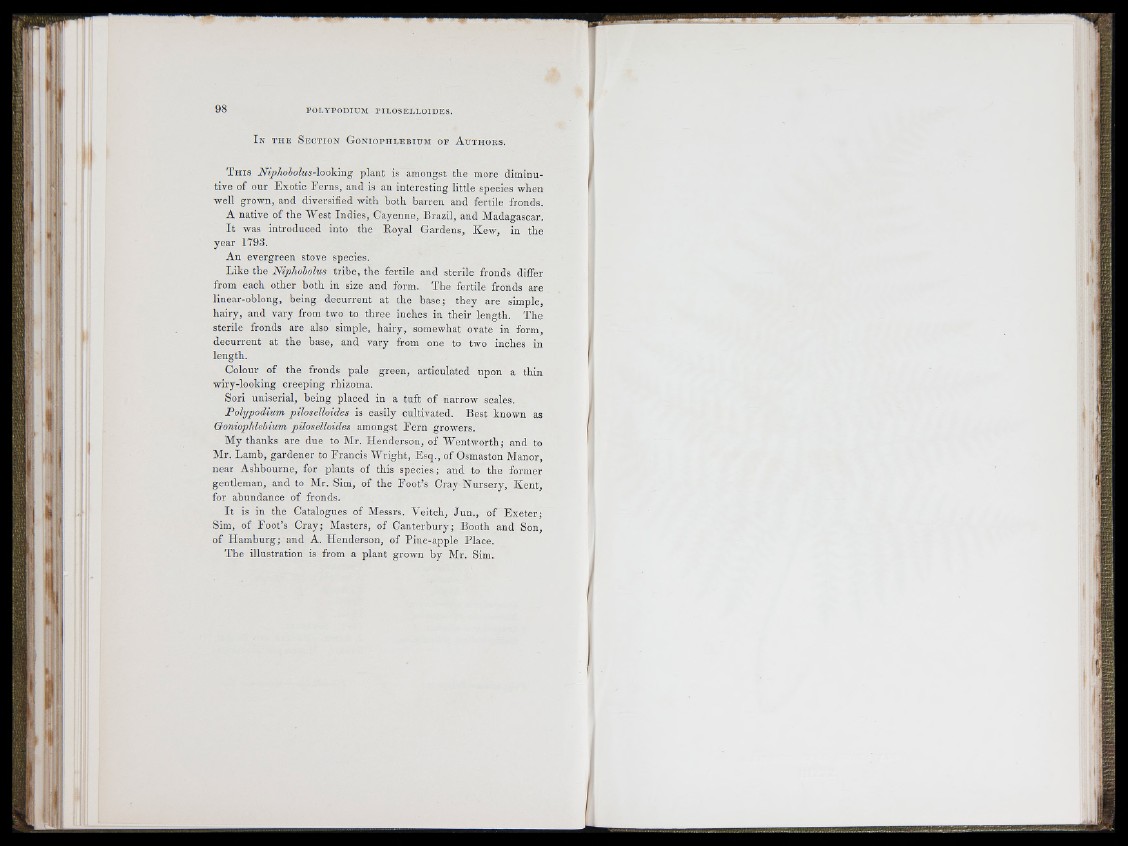
I <!l
i ;
I x T H E S e c t i o n G o n i o p h l e b i u m o f A u t h o r s .
T h i s Niphoholus-lookmg plant is amongst the more diminutive
of our E xotic F erns, and is an interesting little species when
well grown, and diversified with both barren and fertile fronds.
A native of the AVest Indies, Cayenne, Brazil, and Madagascar.
I t was introduced into the Royal Gardens, K ew , in the
year 1793.
An evergreen stove species.
Like the Niphoholus trib e , the fertile and sterile fronds differ
from each other both in size and form. The fertile fronds are
linear-oblong, being decurrent at the base; they are simple,
hairy, and vary from two to th re e inches in their length. The
sterile fronds are also simple, h a iry , somewhat ovate in form,
decu rren t at the base, and vary from one to two inches in
length.
Colour of the fronds pale green, articulated upon a thin
wiry-looking creeping rhizoma.
Sori uniserial, being placed in a tu ft of narrow scales.
Pohjpodium piloselloides is easily cultivated. Best known as
Gonioplilehium piloselloides amongst F e rn growers.
My thanks are due to Mr. Henderson, of AYentworth; and to
Mr. Lamb, gardener to Francis AYright, E sq ., of Osmaston Manor,
near Ashbourne, for plants of this species; and to the former
gentleman, and to Mr. Sim, of the F o o t’s Cray N u rse ry , K e n t,
for abundance of fronds.
I t is in the Catalogues of Messrs. Veitch, Ju n ., of E x e te r;
Sim, of Foot’s C ray ; Alasters, of C a n te rb u ry ; Booth and Son,
of H am b u rg ; and A. Henderson, of Pine-apple Place.
The illustration is from a plant grown by Mr. Sim.